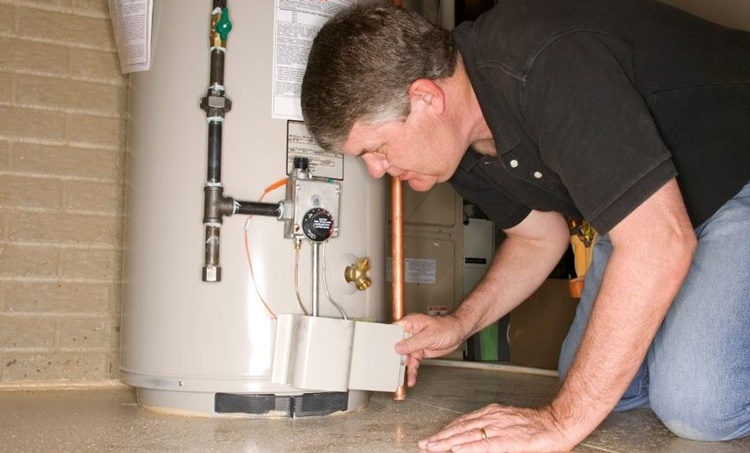Maintaining Your Home's Hot Water System: Important Guidelines
Go ServicesJust how do you feel with regards to How to Maintain Your Water Heater & Prolong its Life?

Hot water is necessary for daily convenience, whether it's for a refreshing shower or cleaning recipes. To guarantee your hot water system runs efficiently and lasts longer, regular maintenance is crucial. This post supplies useful pointers and insights on how to preserve your home's warm water system to avoid disturbances and expensive repair services.
Introduction
Maintaining your home's hot water system might seem difficult, yet with a couple of simple actions, you can ensure it runs smoothly for several years to find. This guide covers whatever from recognizing your warm water system to DIY upkeep suggestions and recognizing when to call specialist assistance.
Significance of Maintaining Your Hot Water System
Regular upkeep not only expands the life expectancy of your hot water system however likewise ensures it runs effectively. Disregarding maintenance can bring about reduced performance, greater power bills, and even early failing of the system.
Indications Your Warm Water System Requirements Upkeep
Understanding when your hot water system needs attention can prevent major issues. Look out for indications such as irregular water temperature level, unusual sounds from the heating system, or corroded water.
Comprehending Your Hot Water System
Before diving into maintenance tasks, it's practical to understand the fundamental components of your hot water system. Generally, this consists of the water heater itself, pipes, anode poles, and temperature controls.
Regular Monthly Upkeep Tasks
Normal regular monthly checks can aid catch small concerns before they intensify.
Flushing the Water Heater
Purging your hot water heater gets rid of sediment buildup, enhancing efficiency and lengthening its life.
Checking and Changing Anode Rods
Anode poles prevent rust inside the storage tank. Evaluating and replacing them when worn is critical.
Inspecting and Adjusting Temperature Settings
Adjusting the temperature setups makes certain optimal performance and safety.
DIY Tips for Maintenance
You can perform numerous maintenance jobs yourself to keep your warm water system in top condition.
Checking for Leaks
Regularly examine pipes and links for leaks, as these can result in water damages and higher bills.
Examining Stress Relief Valves
Checking the stress safety valve guarantees it works appropriately and protects against excessive pressure accumulation.
Insulating Pipelines
Shielding warm water pipelines reduces heat loss and can conserve power.
When to Call a Specialist
While DIY maintenance is useful, some issues call for specialist know-how.
Complicated Concerns Needing Professional Assistance
Examples include major leakages, electric troubles, or if your hot water heater is continually underperforming.
Routine Specialist Upkeep Conveniences
Professional upkeep can consist of extensive assessments, tune-ups, and making certain conformity with safety standards.
Conclusion
Regular maintenance of your home's hot water system is necessary for efficiency, longevity, and cost financial savings. By following these pointers and knowing when to look for specialist help, you can make sure a trusted supply of warm water without unanticipated interruptions.
Water Heater Maintenance Tips
Test the TPR Valve
Shut off the power and the cold-water supply valve. Place a bucket under the pipe connected to the temperature-pressure-release (TPR) valve on the top or side of the tank. (This valve opens if the tank pressure gets too high.) Lift the valve’s tab to let some water out, then let go. If water keeps flowing, drain the tank partway, unscrew the old valve with a pipe wrench, and install a new one. Check the Anode Rod
Put a hose to the tank’s drain cock and let out a few gallons of water. Now fit a 1 1/16-inch socket onto the rod’s hex head on top of the heater (or under its top plate) and unscrew the rod. If it’s less than ½ inch thick or coated with calcium, buy a new one, wrap its threads with Teflon tape, put it back in the tank, and tighten securely. Use this segmented rod if headroom above the tank is limited. Drain the Tank and Wash Out Sediment
Drain the remaining water in the tank into the bucket, then stir up the sediment on the tank’s bottom by briefly opening the cold-water supply valve. Drain and repeat until clean water comes out of the hose. Close the drain cock, refill the tank, and turn its power back on. Adjust the Temperature
Find the temperature dial on the side of the tank and unscrew its cover. Adjust the dial to 120 degrees using a flathead screwdriver. For every 10 degrees the temperature is lowered, you can expect to save up to 5 percent in energy costs. Turn the water heater off or the thermostat down to its lowest setting if you plan to be away from home for more than three days. Insulate the Pipes
Buy some self-sticking 3/8-inch-thick foam pipe insulation that matches the pipes’ diameter. Slide the foam over the hot-and cold-water pipes as far as you can reach. Insulating the cold-water pipe prevents condensation in summer. Peel the tape and squeeze the insulation closed. If the pipe is 6 inches or less from the flue, cover it with 1-inch-thick unfaced fiberglass pipe wrap. https://www.thisoldhouse.com/plumbing/21016402/how-to-maintain-a-water-heater

Do you appreciate more info about Tips on Maintaining a Water Heater? Give feedback down below. We would be happy to know your opinions about this page. We are looking forward that you come back again in the near future. So long as you enjoyed reading our article please do not forget to pass it around. I love reading our article about How to Maintain a Hot Water Heater in a Few Simple Steps.
Contact Us Now